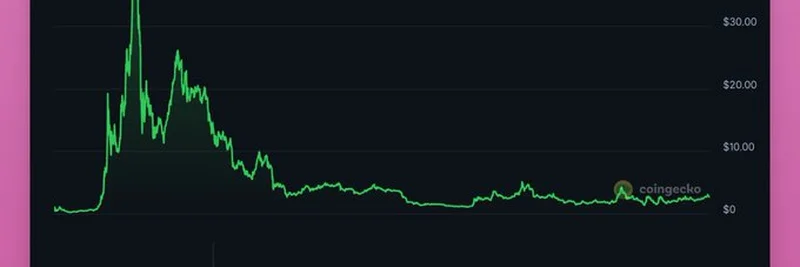Hey there, crypto enthusiasts! If you’ve been keeping an eye on the decentralized finance (DeFi) space, you’ve probably heard about PancakeSwap, the leading decentralized exchange (DEX) on the BNB Chain. Recently, a tweet from Ignas | DeFi sparked some curiosity about its native token, CAKE. With $102 million in holder revenue over 30 days—outpacing competitors like Hyperliquid ($84M) and TRX ($57M)—you’d expect CAKE’s price to soar. But the chart tells a different story. Let’s break it down and figure out what’s going on!
The Surprising Revenue Leader
Ignas pointed out that PancakeSwap is raking in serious cash—$102 million in holder revenue in just 30 days. That’s impressive, especially since 40% of the platform’s fees are used to buy back and burn CAKE tokens. The idea behind this mechanism is simple: reduce the total supply to potentially increase the token’s value over time. It’s a strategy many DeFi projects use to create a deflationary effect, making the token scarcer and, in theory, more valuable.
To put this in perspective, the buyback-and-burn process takes a chunk of the trading fees and uses it to purchase CAKE from the open market. Those tokens are then permanently removed from circulation. It’s like a controlled burn to keep the ecosystem healthy. But despite this, the price chart shared by Ignas shows a flatline, hovering around $2-$3, with no major upward movement.
The Chart That Raises Eyebrows
The image Ignas included shows CAKE’s price history from 2021 to 2025. It had a wild ride early on, peaking in 2021, but since then, it’s been on a steady decline with little recovery. The 24-hour change is down 5.2%, and over the past year, it’s dropped by 44.1%. This stark contrast between the revenue and the price has left many scratching their heads. Why isn’t this token reflecting its financial success?
The Hidden Catch: New Token Issuance
Digging into the thread, Ignas and other users like DeFi Voyager shed light on a critical factor: PancakeSwap issues new CAKE tokens to incentivize trading volume. This means that while the buyback-and-burn process removes some tokens, the issuance of new ones counteracts that effort. It’s like trying to fill a bucket with a hole—any water you pour in leaks out just as fast.
This aggressive issuance is designed to boost activity on the platform, which generates more fees and, in turn, more buybacks. But if the new tokens flood the market, the supply increases, putting downward pressure on the price. Ignas even noted that this creates a “circular numbers” game, where the benefits of burning are negated by the new supply.
Other Factors at Play
The discussion didn’t stop there. Users like Crypto Koryo and Vasu Crypto suggested that much of PancakeSwap’s trading volume might be fake, driven by wash trading. Wash trading is when someone buys and sells the same asset to artificially inflate volume, tricking others into thinking the market is more active than it is. Even if this generates fees for buybacks, the lack of genuine demand could explain the stagnant price.
Additionally, FelixXBT hinted at market psychology, suggesting that investors might be waiting for the “perfect moment” to jump in, potentially leading to a late buying spree that could push the price to unsustainable highs. This unpredictability adds another layer to the CAKE puzzle.
Is CAKE Undervalued or Overcomplicated?
So, is CAKE undervalued, as Ignas initially wondered, or is there something deeper at play? The token’s fundamentals—high revenue and a solid buyback mechanism—suggest it should perform better. However, the offsetting token issuance, potential wash trading, and shifting tokenomics (which change every six months) create a complex picture. It might be undervalued if the market overlooks its long-term potential, but the current mechanics could also be holding it back.
For meme token fans and blockchain practitioners, this is a great case study. It shows how tokenomics can make or break a project, even one as established as PancakeSwap. If you’re into DeFi or meme coins, keeping an eye on CAKE’s next moves could be a smart move—especially if the team addresses the issuance issue.
What’s Next for CAKE?
As of today, August 2, 2025, the crypto community is buzzing about this. Will PancakeSwap tweak its strategy to favor deflationary pressure? Could the market finally recognize CAKE’s value? Only time will tell. For now, it’s a fascinating example of how DeFi projects balance incentives, supply, and demand. Stay tuned to meme-insider.com for the latest updates on CAKE and other meme tokens!
What do you think—should you invest in CAKE, or is the mystery too murky? Drop your thoughts in the comments!


